5 Symptoms of a Bad Radiator Fan (and Replacement Cost)
An overheating engine has the ability to cause major damage in a short period of time. Overheating can be caused by various issues and though often overlooked, an inoperative radiator fan is one of them.
Recognizing the symptoms of a bad radiator fan can prove the difference between additional engine damage and a speedy return to service. Let’s look at those symptoms and how much it will cost to replace the fan.
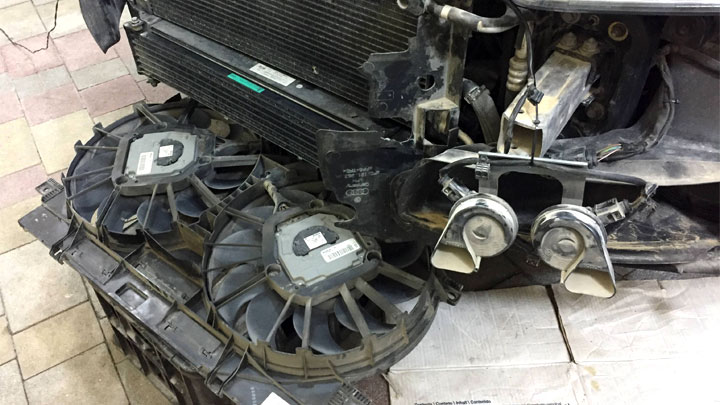
Related: Clogged Radiator Symptoms
Bad Radiator Fan Symptoms
The failure, or impending failure, of a vehicle’s radiator fan is often accompanied by a number of additional symptoms. Recognizing these symptoms can prove quite valuable when attempting to remedy your vehicle of its ailment in the most expedited fashion possible.
The following are several of the most common symptoms associated with radiator fan failure.
#1 – Overheating
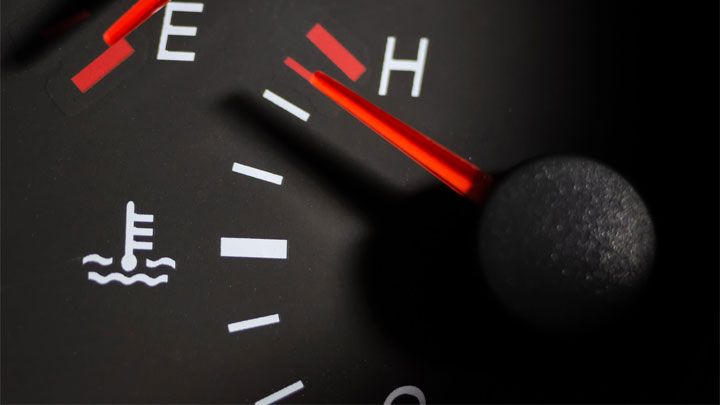
The most prominent symptom of radiator fan failure is overheating. Without a properly operating radiator fan, an engine’s coolant can quickly rise in temperature, which is then indicated by a vehicle’s temperature gauge.
In many cases, this symptom will be most prominent when operating at slower speeds.
Related: Can You Add Water to a Radiator in an Emergency?
#2 – Lack Of A/C

Since a vehicle’s radiator fan also pulls air across the HVAC system’s A/C condenser, a faulty fan often results in a lack of sufficient cabin cooling.
Like the symptom listed above, this concern is most prevalent when a vehicle is operated at slower speeds, as condenser airflow is severely restricted.
#3 – Temperature Warning Light
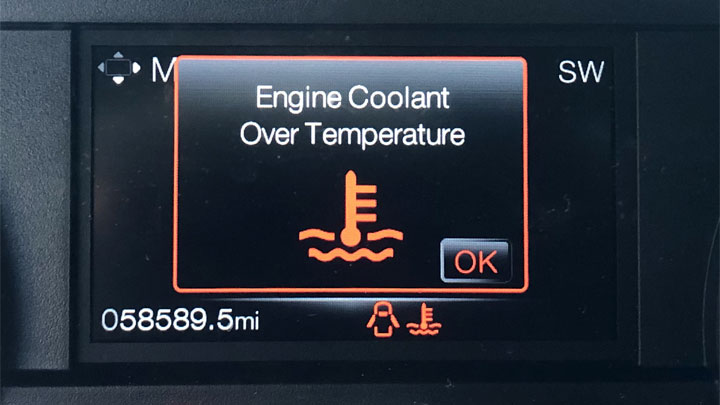
The sudden illumination of a vehicle’s temperature warning light is yet another sign that your cooling fan could be inoperable. This is due to the fact that a vehicle’s radiator is not receiving enough airflow, thereby resulting in overheating.
As a result, an engine’s ECM/PCM recognizes this condition and attempts to warn a driver of the issue at hand.
#4 – Lack of Audible Engagement

Those who are relatively attentive can often tell that their engine’s radiator fan is not operating as intended, simply by listening to their vehicle while sitting at a stop light.
In most cases, the roar of an engine’s radiator fan is easily detected, especially within the few seconds directly following engagement. If you do not notice this sound for an extended period of time, it might be time to take a look at your vehicle’s radiator fan.
#5 – Steam Beneath a Car’s Hood

When a vehicle’s radiator fan is inoperable, it can take only minutes for an engine to overheat. Upon reaching extreme temperatures, a vehicle’s coolant can actually begin to boil.
This boiling coolant builds pressure and is vented through an engine’s radiator cap. This is easily recognized by a significant amount of steam coming from beneath a
What Does a Radiator Fan Do?

A radiator fan facilitates proper engine cooling by drawing air across a vehicle’s radiator. This, in turn, allows coolant to circulate through the radiator to shed additional heat with greater efficiency. This is especially important when ambient temperatures are at a relatively high threshold, as overheating can occur quite rapidly under such extenuating circumstances.
After being allowed to dissipate this additional heat, coolant is then returned to an engine’s block and cylinder heads via a rubber radiator hose. The coolant then circulates throughout an engine, before being distributed back to the radiator, where the cooling process starts once again.
An engine’s cooling fan is set to operate at a specific temperature, predetermined by a vehicle’s manufacturer. This prevents the radiator from engaging when a vehicle has not yet warmed to an acceptable operating temperature.
Older mechanical radiator fans, as well as those found on many trucks, are engaged through a fan clutch that locks into place as a silicone packing expands under direct heat. Electrical fans engage through a direct signal from an engine’s ECM/PCM.
A lack of cooling fan operation drastically reduces an engine’s ability to keep system temperatures in check. This issue continues to compound each time coolant is circulated through the radiator until overheating eventually occurs.
This effect only snowballs from this point, with the failure of various gaskets being inevitable, upon reaching their thermal limitations.
See Also: 3 Causes of a Collapsed Radiator Hose
What Causes the Fan to Fail?
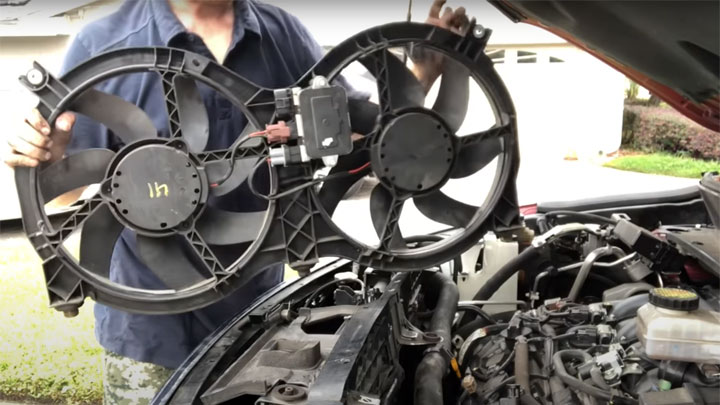
The most common cause of radiator fan failure is simple wear and tear, which results in compromised bearings. Upon deteriorating to a certain extent these bearings can actually cause a fan to drag, or lock-up all together.
Likewise, a fan assembly electric motor is prone to fatigue as well. Of course, a radiator fan can also be rendered inoperable when struck by debris along the road that is driven over and kicked up beneath a vehicle’s undercarriage.
In some cases, a failed motor mount will cause the engine to slightly tilt which in turn may cause the fan blades to hit a surrounding area.
Aside from a total fan failure, a vehicle’s radiator fan can also fail to operate for a number of additional reasons. The most common issues of this type include blown fuses, faulty relays, and damaged wiring. For this reason, it is extremely important to diagnose the source of your radiator fan’s issue, before condemning the fan itself.
Can You Drive With a Broken Radiator Fan?
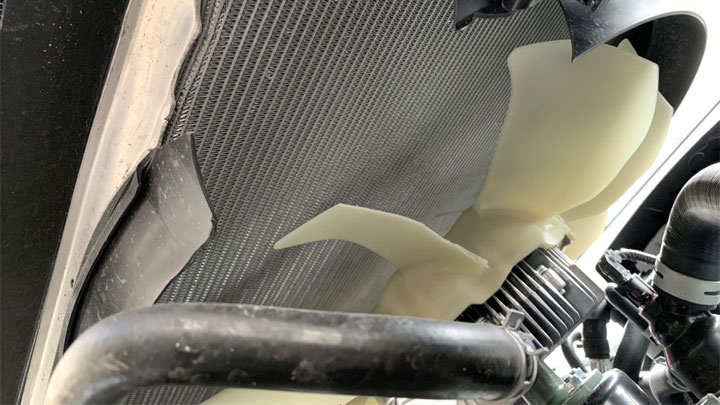
While a vehicle will operate without a functional radiator fan, it should never be driven in this manner. This is due to the fact that your engine is far more prone to overheating when operated in this fashion.
Without air being drawn across a vehicle’s radiator, it is not a matter of if, but when, overheating will occur. This, in itself, can lead to far more significant issues than those attributed to a failed radiator fan.
When an engine overheats, it is prone to a host of problems, many of which carry severe and costly consequences. Some of the direst of these secondary issues include blown head gaskets, cracked cylinder heads, or cracked engine blocks. Each of these three issues requires a major engine overhaul to remedy, at times making total engine replacement the most feasible option.
In any event, driving a vehicle with an inoperable radiator fan should be avoided at all costs, and the fan itself should be replaced immediately if it is deemed to be faulty. If you do not feel comfortable tackling such repairs yourself, schedule an appointment with a trusted automotive service center as soon as possible.
Should a Radiator Fan Turn On When the A/C Is On?
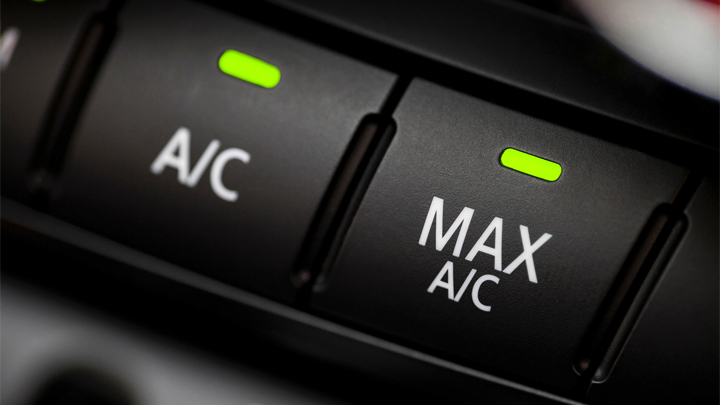
In almost every case, a vehicle’s radiator fan should engage when the A/C system function is initiated. This is by design and is intended to achieve proper A/C system pressures for efficient cooling. Simply put, your vehicle’s radiator fan is engineered to complete two individual tasks simultaneously.
A vehicle’s A/C condenser is mounted directly in front of its radiator, and requires sufficient airflow for proper operation, in much the same way as the radiator itself. A vehicle’s radiator fan pulls air across this condenser in the same way that it pulls air through the radiator.
If a vehicle’s radiator fan were to not engage during A/C operation, you would find the system did not cool as expected.
Radiator Fan Replacement Cost
Best places to order parts? See: 19 Best Online Auto Parts Stores
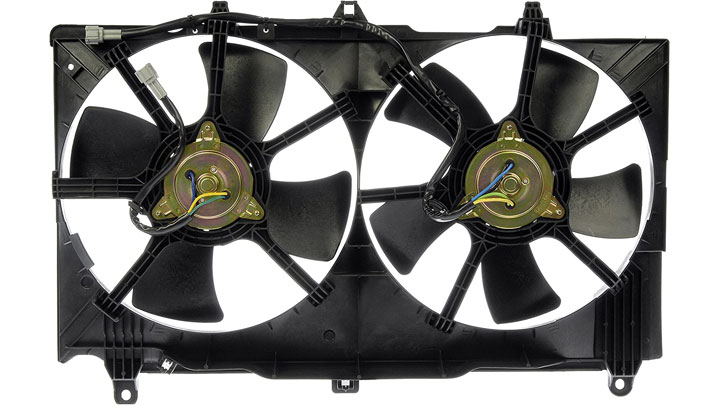
The exact cost associated with radiator fan replacement often varies quite extensively from one end of the price spectrum to the other. These variations are the result of model-specific parts costs, as well as the total number of labor hours required to complete such a repair.
On average, one can expect to pay somewhere in the range of $200-$550 to have their vehicle’s radiator fan replaced. The bulk of this price is comprised of the labor required to make the repair itself, while a radiator fan itself can typically be purchased for between $50-$200.
- Car Temperature Gauge Stopped Working? (Here’s Why) - Apr 15, 2024
- Ignition Coil vs Coil Pack (What’s the Difference?) - Apr 8, 2024
- Windshield Wipers Won’t Turn Off? (Causes and What to Do) - Apr 5, 2024

Am driving a truck but now it’s the third time my fan has broken,
Mechanic is saying it’s caused by release of harsh clutch .
Could this be the cause?
Sounds plausible. I’m not sure. It may also be good to check that nothing is interfering with the fans. Are there any wires or nearby components that could interfere with fan operation if the engine were to rock a bit from the natural play that most engine mounts have?